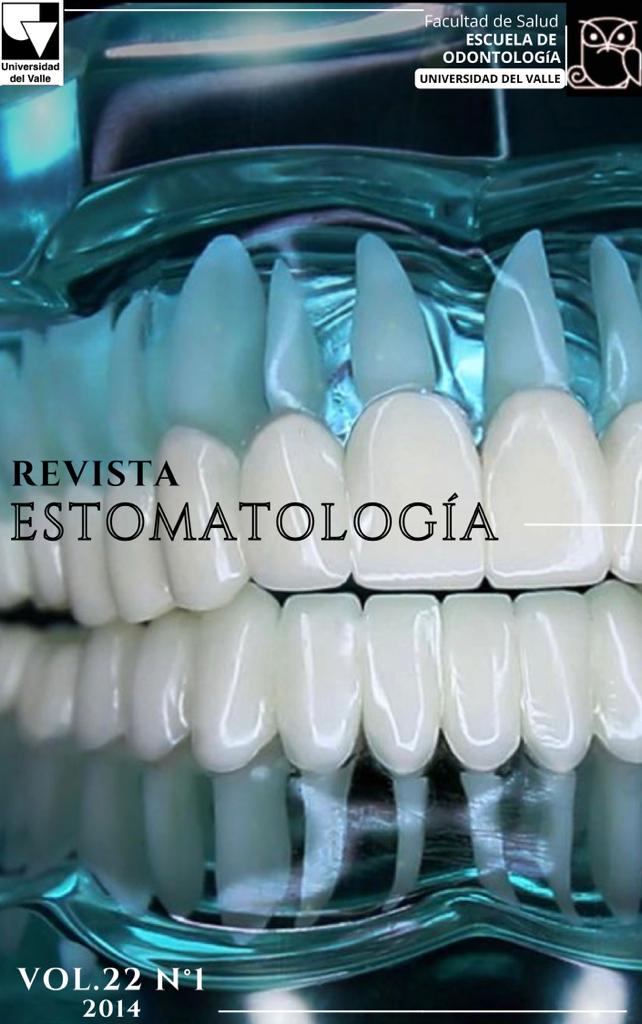Effectiveness of antibacterial dental brushes. In vitro study
Keywords:
microbial contaminatio, antimicrobial toothbrus, Enterobacter cloacae, Agregatibacter actinomycetemcomitansMain Article Content
Objective: Toothbrush contamination is important to the oral health and the general health. Toothbrush is recommended to the regular elimination of the bacterial plaque; however it is also a potential source infection since it gets contaminated. Antibacterial toothbrushes were introduced to control the microbial contamination.
Materials and methods: The effectiveness of antibacterial toothbrushes on the growth inhibition of A. actinomycetemcomitans, and E. cloacae were determined. This study included, three brands of dental brushes which were Oral-B® antibacterial Colgate® antibacterial I and as control one conventional dental brush non-antibacterial of Colgate.
Materials and methods: A total of 48 dental brushes were inoculated, 24 with A. actinomycetemcomitans and 24 with E. cloacae and the microbial viability was established after diverse times as follows: 24 hours, 4 days, 12 days and 24 days, in an experiment for duplicate, evaluating the bacterial growth.
Results: At 24 hours the dental brushes fulfill their antibacterial efficacy including the conventional dental brush, The Oral-B® antibacterial toothbrush and the Colgate® antibacterial controlled completely the growth of the colonies of the A. actinomycetemcomitans, while the Oral-B antibacterial toothbrush allowed E. cloacae’s growth. Finally after 24 days it was found that the inoculation the dental brushes does not inhibited either the A. actinomycetemcomitans or neither the E. cloacae.
Conclusions: The antibacterial brushes are able to inhibit the growth of A. actinomycetemcomitans between 24 hours to 4 days, but this antibacterial effect is lost over the time. A super-infectious microorganism such as E. cloacae is more resistant to antibacterials present on dental brushes.
2. Contreras A, Arce R, Botero JE, Jaramillo A, Betancourt M. Toothbrush Contamination in Family Members. Rev Clin. Periodoncia Implantol. Rehábil. Oral. 2010; 3(1): 24-26.
3. Neal PR, Rippin JW. The efficacy of a toothbrush disinfectant spray - an in vitro study. J Dent. 2003; 31(2):153-7.
4. Nelson-Filho P, Macari S, Faria G, Assed S, Ito IY. Microbial contamination of toothbrushes and their decontamination. Pediatr Dent. 2000; 22(5):381-4.
5. Turner LA, McCombs GB, Tolle SL. A novel approach to controlling bacterial contamination on toothbrushes: chlorhexidine coating .Int J Dent Higiene 2009; 7:241-245.
6. Contreras A, Arce RM, Botero JE, Jaramillo A. Contaminación Bacteriana de Cepillos Dentales en niños y sus padres: Una cuestión de educación. Revista estomatología. 2002-2003; 10:4-12.
7. Lang N, Karring T, Lindhhe J. Proceedings of the 2nd European Workshops on Periodontology, Chemicals in periodontics. Quintessence Books. 1997; 120-192, 204-21.
8. Jenny Cl, The use and Handling of toothbrushes in schools and institutions. Disponible en: http://www.familyinternet.com/dentist/hand.html
9. Delgadillo GI, Martínez GJ, Ortiz AN, Pérez OV, Rodríguez FA, Vázquez GI. Evaluación de la contaminación microbiana en cepillos dentales ubicados en dos diferentes ambientes: cuarto de baño y en el estuche del mismo cepillo.Disponible en http://odontologia.iztacala.unam.mx/instrum_y_lab1/otros/ColoquioXVIII/contenido/cartel/1305/evaluacioncontam.htm. Acceso
10. Svanberg M. Contamination of toothpaste and toothbrush by Streptococcus mutans. Scand J Dent Res. 1978; 86(5):412-414.
11. Sconyers JR, Crawford JJ, Moriarty JD. Relationship of bacteremia to toothbrushing in patients with periodontitis. JADA 1973; 87(3): 616-622.
12. Contreras A, Astudillo M, Daza L. et al. Contaminación microbiana de los cepillos dentales en pacientes con enfermedad periodontal. Revista Estomatología. 2002; 10(1):4-14.
13. Caudry SD, Klitorinos A, Chan ECS. Contaminated toothbrushes and their disinfection. Journal of Canadian Dental Association 1995; 61:511-6.
14. Devine DA, Percival RS, Wood DJ, Tuthill TJ, Kite P, Killington RA et al. Inhibition of biofilms associated with dentures and toothbrushes by tetrasodium EDTA. J Appl Microbiol. 2007 Dec; 103(6):2516-24.
15. Berger JR, Drukartz MJ, Tenenbaum MD. The efficacy of two UV toothbrush sanitization devices. A pilot study. NY StateDent J. 2008; 74(1):50-2.
16. Bunetel L, Tricot-Doleux S, Agnani G, Bonnaure-Mallet M, In vitro evaluation of the retention of three species of pathogenic microorganisms by three different types of toothbrush. Oral Microbiology and Immunology. 2000; 15 (5): 313-6.
17. Richard T, Glass, Lare M, Toothbrush contamination: a potential health risk. Quintessence International. 1986; 17(1): 39-42.
18. Edson K, Back-Brito N, Balducci I, KogaIto Y. Evaluation of alternative methods for disinfection of toothbrushes. Braz Oral Res. 2010; 24(1):28-33.
19. Matsumura Y, Yoshikata K,Kunisaki S, Tsuchido T. Mode of bactericidal action of silver zeolite and its comparison with that of silver nitrate. Applied and environmental microbiology. 2003; 69 (7): 4278-81.
Downloads
Los autores/as conservan los derechos de autor y ceden a la revista el derecho de la primera publicación, con el trabajo registrado con la licencia de atribución de Creative Commons, que permite a terceros utilizar lo publicado siempre que mencionen la autoría del trabajo y a la primera publicación en esta revista.

